Generic x86-64
Install Home Assistant Operating System
Follow this guide if you want to get started with Home Assistant easily or if you have little to no Linux experience.
Prerequisites
This guide assumes that you have a dedicated Generic x86-64 PC to exclusively run the Home Assistant Operating SystemHome Assistant OS, the Home Assistant Operating System, is an embedded, minimalistic, operating system designed to run the Home Assistant ecosystem on single board computers (like the Raspberry Pi) or Virtual Machines. It includes Home Assistant Core, the Home Assistant Supervisor, and supports add-ons. Home Assistant Supervisor keeps it up to date, removing the need for you to manage an operating system. Home Assistant Operating System is the recommended installation type for most users..
- This is typically an Intel or AMD-based system.
- The system must be 64-bit capable and be able to boot using UEFI.
- Most systems produced in the last 10 years support the UEFI boot mode.
Summary
- First, you will need to configure your Generic x86-64 PC to use UEFI boot mode.
- Then, write the Home Assistant Operating SystemHome Assistant OS, the Home Assistant Operating System, is an embedded, minimalistic, operating system designed to run the Home Assistant ecosystem on single board computers (like the Raspberry Pi) or Virtual Machines. It includes Home Assistant Core, the Home Assistant Supervisor, and supports add-ons. Home Assistant Supervisor keeps it up to date, removing the need for you to manage an operating system. Home Assistant Operating System is the recommended installation type for most users. disk image to your boot medium.
Configure the BIOS on your x86-64 hardware
To boot Home Assistant OS, the BIOS needs to have UEFI boot mode enabled and Secure Boot disabled. The following screenshots are from a 7th generation Intel NUC system. The BIOS menu will likely look different on your system. However, the options should still be present and named similarly.
-
To enter the BIOS, start up your x86-64 hardware and repeatedly press the
F2key (on some systems this might beDel,F1orF10).
-
Make sure the UEFI Boot mode is enabled.
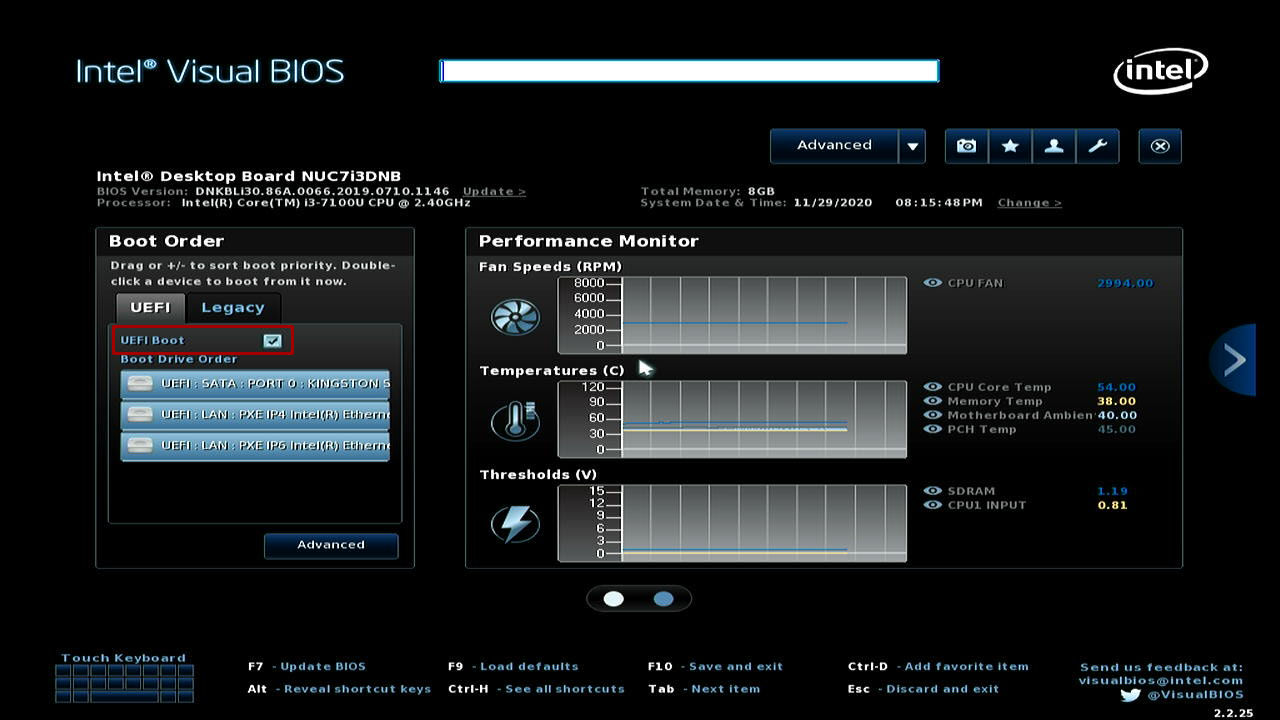
-
Disable Secure Boot.
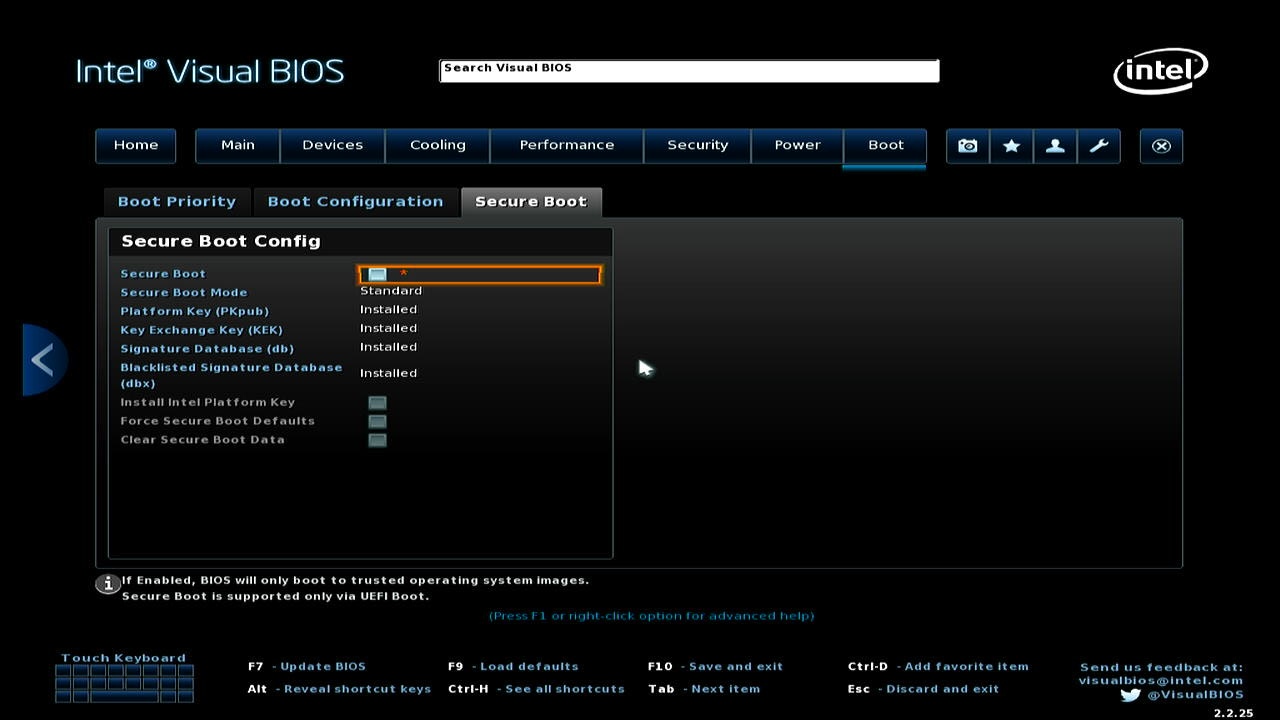
-
Save your changes and exit.
The BIOS configuration is now complete.
Write HAOS onto your x86-64 hardware
Next, you need to write the Home Assistant Operating System image to the boot medium, which is the medium your x86-64 hardware will boot from when it is running Home Assistant.
HAOS has no integrated installer that writes the image automatically. You will write it manually using either the Disks utility from Ubuntu or Balena Etcher.
Typically, an internal medium like S-ATA hard disk, S-ATA SSD, M.2 SSD, or a non-removable eMMC is used for the x86-64 boot medium. Alternatively, an external medium can be used such as a USB SDD, though this is not recommended.
To write the HAOS image to the boot medium on your x86-64 hardware, there are 2 different methods:
Method 1 (recommended): Boot Ubuntu from a USB flash drive and install the Home Assistant Operating SystemHome Assistant OS, the Home Assistant Operating System, is an embedded, minimalistic, operating system designed to run the Home Assistant ecosystem on single board computers (like the Raspberry Pi) or Virtual Machines. It includes Home Assistant Core, the Home Assistant Supervisor, and supports add-ons. Home Assistant Supervisor keeps it up to date, removing the need for you to manage an operating system. Home Assistant Operating System is the recommended installation type for most users. from there. It also works on laptops and PCs with internal hard disks.
Method 2: With this method, you write the Home Assistant Operating disk image directly onto a boot medium from your regular computer. The steps are a bit more complex. If you have non-removable internal mediums (for example because you are using a laptop) or do not have the necessary adapter (for example an USB to S-ATA adapter) use method 1 instead.
Method 1: Installing HAOS via Ubuntu booting from a USB flash drive
Required material
- Computer
- The target x86-64 hardware, on which you want to install the Home Assistant Operating SystemHome Assistant OS, the Home Assistant Operating System, is an embedded, minimalistic, operating system designed to run the Home Assistant ecosystem on single board computers (like the Raspberry Pi) or Virtual Machines. It includes Home Assistant Core, the Home Assistant Supervisor, and supports add-ons. Home Assistant Supervisor keeps it up to date, removing the need for you to manage an operating system. Home Assistant Operating System is the recommended installation type for most users. (HAOS)
- USB flash drive (USB thumb drive is sufficient, it should be at least 8 GB in size)
- Internet connection
To install HAOS via Ubuntu from a USB flash drive
-
Notice: This procedure will write the Home Assistant Operating SystemHome Assistant OS, the Home Assistant Operating System, is an embedded, minimalistic, operating system designed to run the Home Assistant ecosystem on single board computers (like the Raspberry Pi) or Virtual Machines. It includes Home Assistant Core, the Home Assistant Supervisor, and supports add-ons. Home Assistant Supervisor keeps it up to date, removing the need for you to manage an operating system. Home Assistant Operating System is the recommended installation type for most users. onto your device.
- This means you will lose all the data as well as the previously installed operating system.
- Back up your data before carrying out this procedure.
- Create a live operating system on a USB flash drive:
- Follow the Ubuntu Desktop instructions
on writing an Ubuntu Desktop iso file onto a USB device.
- Follow the Ubuntu Desktop instructions
- Insert the USB flash drive into the system on which you want to run Home Assistant.
- Boot the live operating system.
- You might need to adjust boot order or use F10 (might be a different F-key depending on the BIOS) to select the USB flash drive as boot device.
- When prompted, make sure to select Try Ubuntu. This runs Ubuntu on the USB flash device.
- The system then starts Ubuntu.
- Connect your system to your network and make sure it has internet access.
- In Ubuntu, open a browser and open the current documentation page, so you can follow the steps.
- From there, download the image
.
- From there, download the image
- In Ubuntu, in the bottom left corner, select Show Applications.
- In the applications, search and open Disks and start restoring the HAOS image:
- In Disks, on the left side, select the internal disk device you want to install HAOS onto.
- On top of the screen, select the three dots
menu and select Restore Disk Image…. 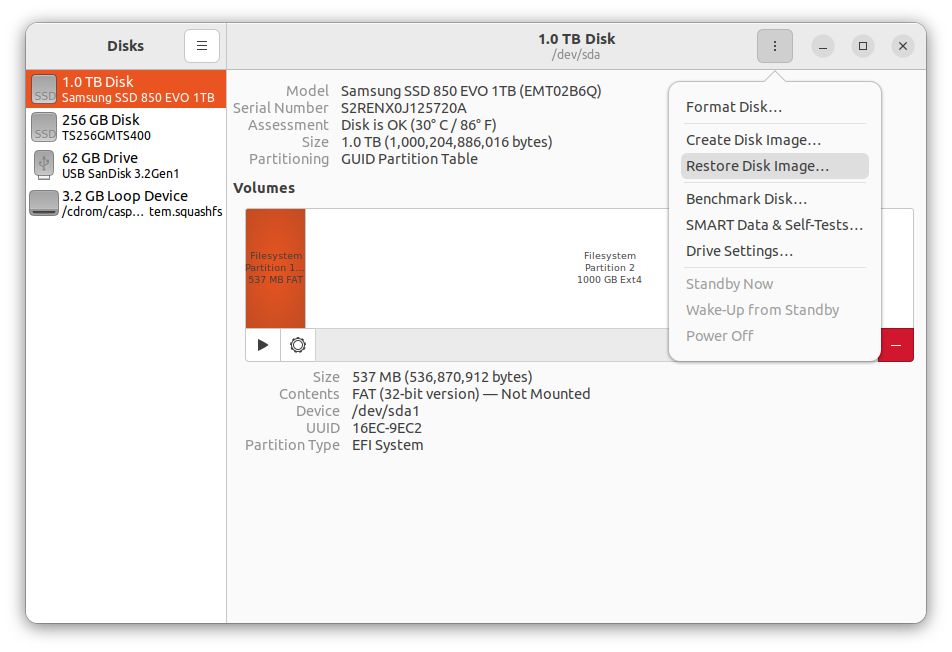
- Select the image you just downloaded.
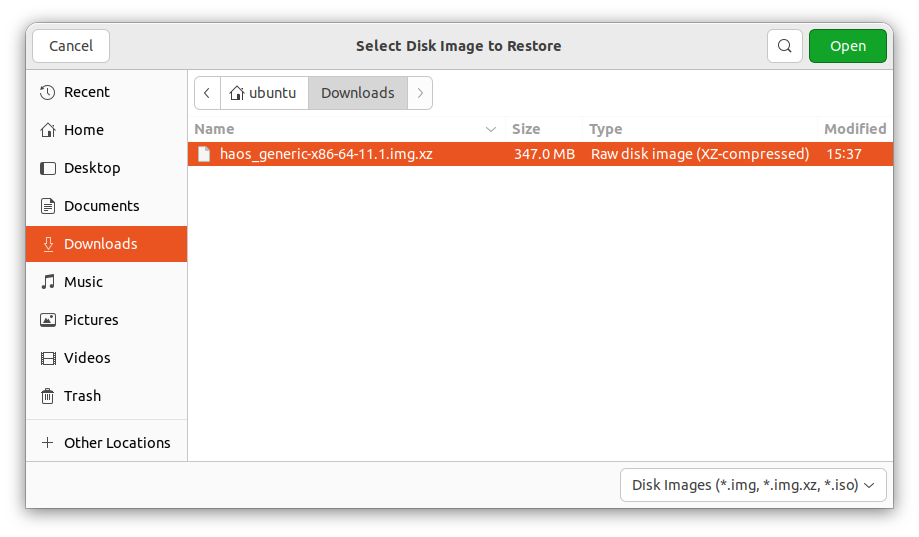
- Select Start Restoring….
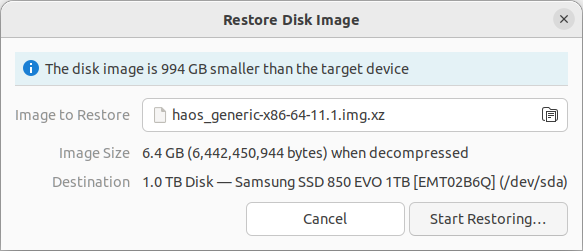
- Confirm by selecting Restore.
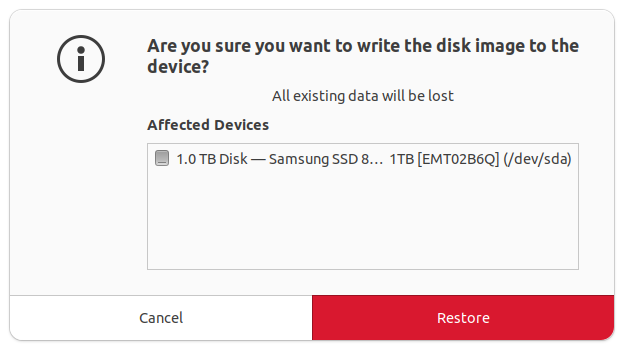
- If you are getting an Error unmounting filesystem error message, stating that the target is busy:
- Most likely, you are running Ubuntu on your internal disk. Instead, you need to run it on your stick.
- Go back to step 3 and during start up, make sure you select Try Ubuntu (and NOT Install Ubuntu).
- Another issue may be that live Ubuntu is using the Swap partition of an existing Linux installation.
- If you see “Swap” listed as a partition on the drive you’re going to install HAOS, just select the Swap partition, then press the stop button to unmount it and try the restore operation again.
- In the partitions overview, you should now see the restore operation in progress.
- The Home Assistant Operating System is now being installed on your system.
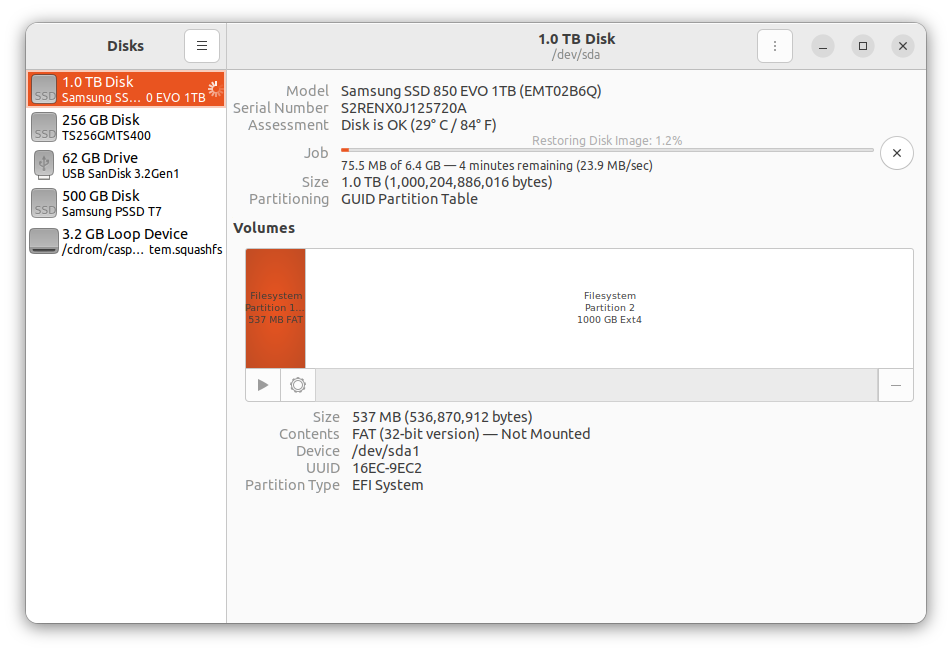
- The Home Assistant Operating System is now being installed on your system.
- Once the Home Assistant Operating System is installed, shut down the system.
- Once Ubuntu has been shut down, remove the USB flash drive (Ubuntu will inform you when this is the case).
- Your Home Assistant server is now set up and you can start using it.
- To use it, proceed as described under start up your generic x86-64.
Method 2: Installing HAOS directly from a boot medium
Use this method only if Method 1 does not work for you.
Required material
- Computer
- The target x86-64 hardware, on which you want to install the Home Assistant Operating SystemHome Assistant OS, the Home Assistant Operating System, is an embedded, minimalistic, operating system designed to run the Home Assistant ecosystem on single board computers (like the Raspberry Pi) or Virtual Machines. It includes Home Assistant Core, the Home Assistant Supervisor, and supports add-ons. Home Assistant Supervisor keeps it up to date, removing the need for you to manage an operating system. Home Assistant Operating System is the recommended installation type for most users. (HAOS)
- Boot medium
- Internet connection
Write the image to your boot medium
-
Notice: This procedure will write the Home Assistant Operating SystemHome Assistant OS, the Home Assistant Operating System, is an embedded, minimalistic, operating system designed to run the Home Assistant ecosystem on single board computers (like the Raspberry Pi) or Virtual Machines. It includes Home Assistant Core, the Home Assistant Supervisor, and supports add-ons. Home Assistant Supervisor keeps it up to date, removing the need for you to manage an operating system. Home Assistant Operating System is the recommended installation type for most users. onto your device.
- This means you will lose all the data as well as the previously installed operating system.
- Back up your data before continuing with the next step.
-
Attach the Home Assistant boot medium (storage device) to your computer.
-
Download and start Balena Etcher
. You may need to run it with administrator privileges on Windows. -
Download the image to your computer.
- Copy the URL for the image.
- If there are multiple links below, make sure to select the correct link for your version of Generic x86-64.
https://github.com/home-assistant/operating-system/releases/download/16.3/haos_generic-x86-64-16.3.img.xzSelect and copy the URL or use the “copy” button that appears when you hover it.
-
Paste the URL into your browser to start the download.
-
Extract the file you just downloaded.
-
Select Flash from file and select the image you just extracted.
- Do not use Flash from URL. It does not work on some systems.
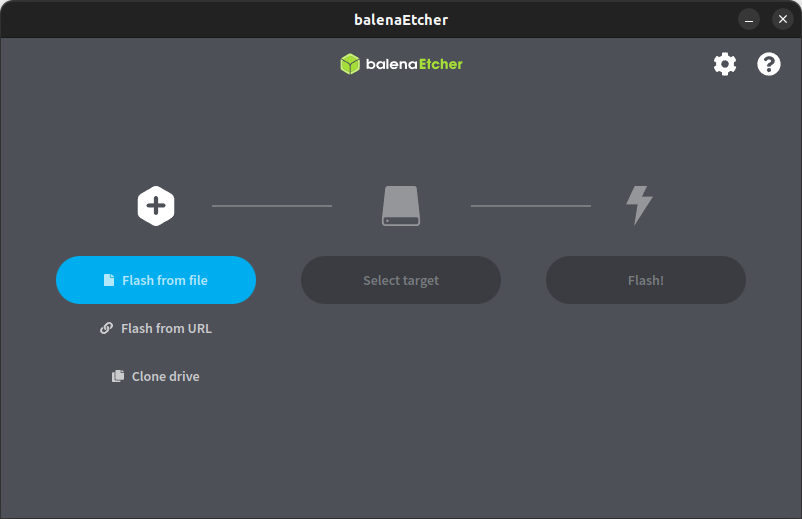
- Do not use Flash from URL. It does not work on some systems.
-
Select target.
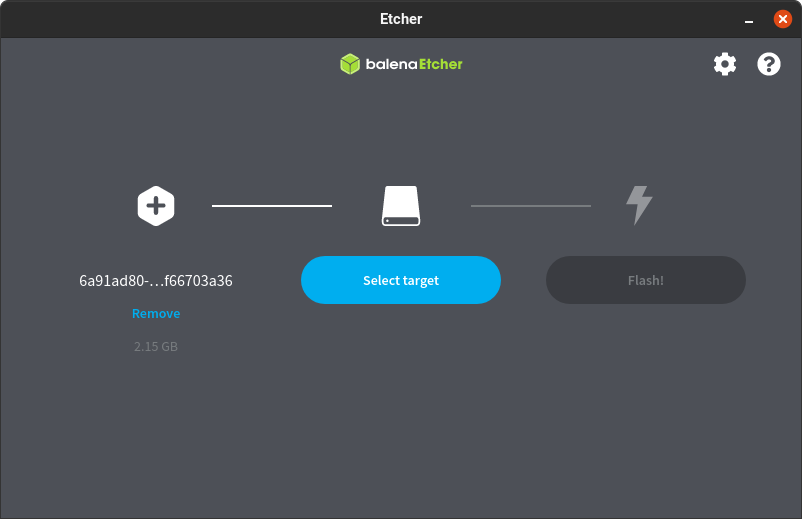
-
Select the boot medium (storage device) you want to use for your installation.
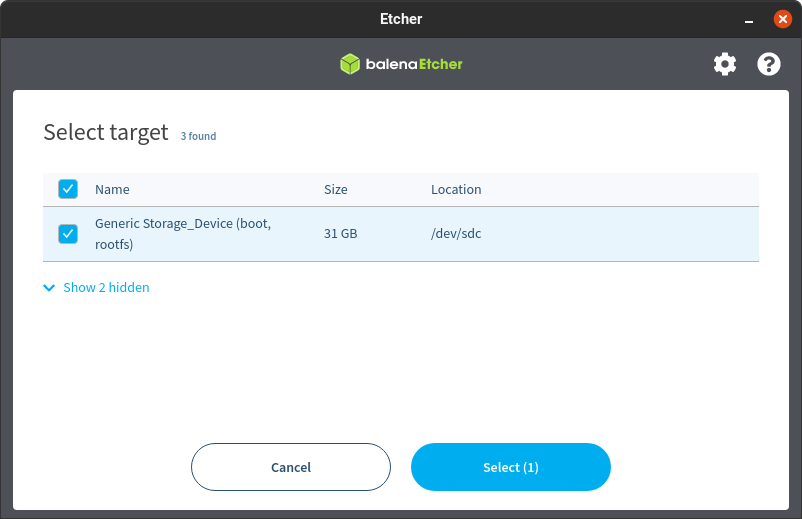
-
Select Flash! to start writing the image.
- If the operation fails, decompress the .xz file and try again.
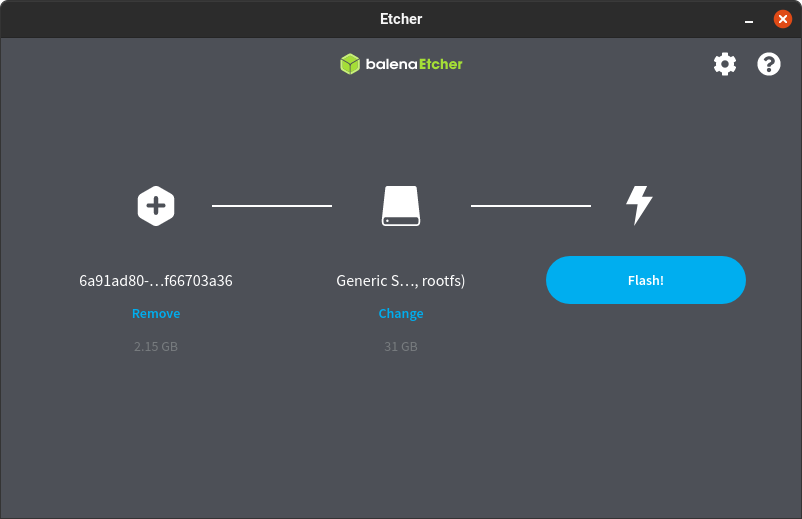
- When Balena Etcher has finished writing the image, you will see a confirmation.

- If the operation fails, decompress the .xz file and try again.
Start up your Generic x86-64
-
If you used method 1 for the installation, make sure the USB flash drive is removed from the system.
-
If you used method 2 for the installation, install the boot medium into your x86-64 hardware.
- Plug in an Ethernet cable that is connected to the network and to the internet.
- Note: Internet is required because the newly installed Home Assistant OS does not contain all Home Assistant components yet. It downloads the latest version of Home Assistant Core on first start.
- Power the system on. If you have a screen connected to the Generic x86-64 system, after a minute or so the Home Assistant welcome banner will appear in the console.
If the machine complains about not being able to find a bootable medium, you might need to specify the EFI entry in your BIOS.
This can be accomplished either by using a live operating system (e.g. Ubuntu) and running the following command (replace <drivename> with the appropriate drive name assigned by Linux, typically this will be sda or nvme0n1 on NVMe SSDs):
efibootmgr --create --disk /dev/<drivename> --part 1 --label "HAOS" \
--loader '\EFI\BOOT\bootx64.efi'
The efibootmgr command will only work if you booted the live operating system in UEFI mode, so be sure to boot from your USB flash drive in this mode. Depending on your privileges on the prompt, you may need to run efibootmgr using sudo.
Or else, the BIOS might provide you with a tool to add boot options, there you can specify the path to the EFI file:
\EFI\BOOT\bootx64.efi
- In the browser of your desktop system, within a few minutes you will be able to reach your new Home Assistant at homeassistant.local:8123
.
If you are running an older Windows version or have a stricter network configuration, you might need to access Home Assistant at homeassistant:8123http://X.X.X.X:8123 (replace X.X.X.X with your Generic x86-64’s IP address).
With the Home Assistant Operating System installed and accessible, you can continue with onboarding.
Install Home Assistant Container
These below instructions are for an installation of Home Assistant ContainerHome Assistant Container is a standalone container-based installation of Home Assistant Core. Any OCI
This installation type does not have access to add-ons. If you want to use add-ons, you need to use another installation type. The recommended type is Home Assistant Operating SystemHome Assistant OS, the Home Assistant Operating System, is an embedded, minimalistic, operating system designed to run the Home Assistant ecosystem on single board computers (like the Raspberry Pi) or Virtual Machines. It includes Home Assistant Core, the Home Assistant Supervisor, and supports add-ons. Home Assistant Supervisor keeps it up to date, removing the need for you to manage an operating system. Home Assistant Operating System is the recommended installation type for most users.. Checkout the overview table of installation types to see the differences.
Prerequisites This guide assumes that you already have an operating system setup and a container runtime installed (like Docker).
If you are using Docker then you need to be on at least version 19.03.9, ideally an even higher version, and libseccomp 2.4.2 or newer. Docker Desktop will not work, you must use Docker Engine.
Platform installation
Installation with Docker is straightforward. Adjust the following command so that:
-
/PATH_TO_YOUR_CONFIGpoints at the folder where you want to store your configuration and run it. Make sure that you keep the:/configpart. -
MY_TIME_ZONEis a tz database name, like TZ=America/Los_Angeles. -
D-Bus is optional but required if you plan to use the Bluetooth integration.
docker run -d \ --name homeassistant \ --privileged \ --restart=unless-stopped \ -e TZ=MY_TIME_ZONE \ -v /PATH_TO_YOUR_CONFIG:/config \ -v /run/dbus:/run/dbus:ro \ --network=host \ ghcr.io/home-assistant/home-assistant:stable# if this returns "Image is up to date" then you can stop here docker pull ghcr.io/home-assistant/home-assistant:stable# stop the running container docker stop homeassistant# remove it from Docker's list of containers docker rm homeassistant# finally, start a new one docker run -d \ --name homeassistant \ --restart=unless-stopped \ --privileged \ -e TZ=MY_TIME_ZONE \ -v /PATH_TO_YOUR_CONFIG:/config \ -v /run/dbus:/run/dbus:ro \ --network=host \ ghcr.io/home-assistant/home-assistant:stableOnce the Home Assistant Container is running Home Assistant should be accessible using
http://<host>:8123(replacewith the hostname or IP of the system). You can continue with onboarding. Onboarding Restart Home Assistant
If you change the configuration, you have to restart the server. To do that you have 3 options.
- In your Home Assistant UI, go to the Settings > System and click the Restart button.
- You can go to the Developer Tools > Actions, select
homeassistant.restartand select Perform action. - Restart it from a terminal.
docker restart homeassistantdocker compose restartDocker compose
Tip docker composeshould already be installedon your system. If not, you can manually install it. As the Docker command becomes more complex, switching to
docker composecan be preferable and support automatically restarting on failure or system restart. Create acompose.yamlfile:services: homeassistant: container_name: homeassistant image: "ghcr.io/home-assistant/home-assistant:stable" volumes: - /PATH_TO_YOUR_CONFIG:/config - /etc/localtime:/etc/localtime:ro - /run/dbus:/run/dbus:ro restart: unless-stopped privileged: true network_mode: host environment: TZ: Europe/AmsterdamStart it by running:
docker compose up -dOnce the Home Assistant Container is running, Home Assistant should be accessible using
http://<host>:8123(replacewith the hostname or IP of the system). You can continue with onboarding. Onboarding Exposing devices
In order to use Zigbee or other integrations that require access to devices, you need to map the appropriate device into the container. Ensure the user that is running the container has the correct privileges to access the
/dev/tty*file, then add the device mapping to your container instructions:docker run ... --device /dev/ttyUSB0:/dev/ttyUSB0 ...services: homeassistant: ... devices: - /dev/ttyUSB0:/dev/ttyUSB0Optimizations
The Home Assistant Container is using an alternative memory allocation library jemalloc
for better memory management and Python runtime speedup. As the jemalloc configuration used can cause issues on certain hardware featuring a page size larger than 4K (like some specific ARM64-based SoCs), it can be disabled by passing the environment variable
DISABLE_JEMALLOCwith any value, for example:docker run ... -e "DISABLE_JEMALLOC=true" ...services: homeassistant: ... environment: DISABLE_JEMALLOC: trueThe error message
<jemalloc>: Unsupported system page sizeis one known indicator.